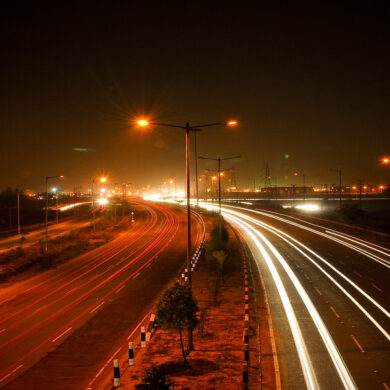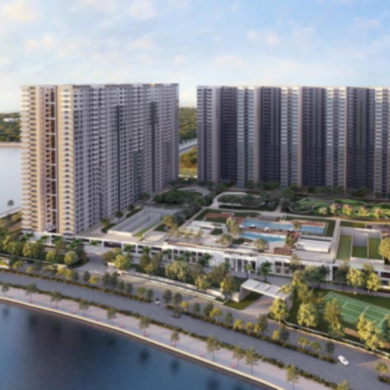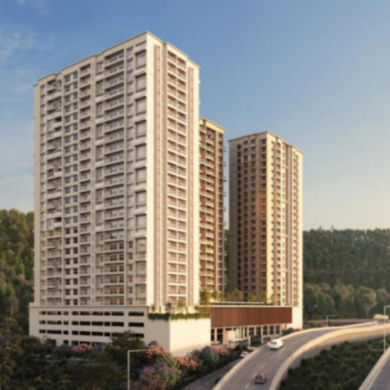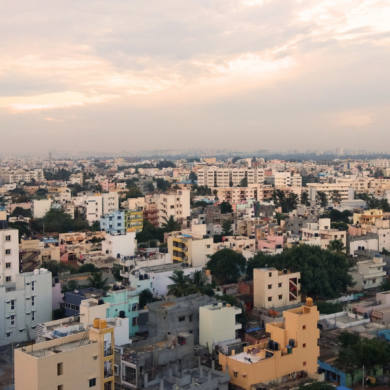
Refuge area in building refers to key safety zones designed for emergencies, ensuring fire safety and compliance with building regulations – especially in high-rise structures.
Refuge area in building serves as an essential safety zone during emergencies, offering temporary shelter for occupants. These designated spaces are mandatory in high-rise structures as per building regulations, to ensure safety during fires or other emergencies.
Their design, placement, and compliance with legal standards play a vital role in enhancing safety and emergency preparedness in residential and commercial buildings. Understanding refuge area regulations and their importance is key to maintaining safety standards in modern constructions.
Table of Contents
What is a Refuge Area?
Refuge area is a designated space in a building, where occupants can seek temporary shelter during emergencies such as fires or natural disasters. These spaces are designed to be fire-resistant and are equipped with proper ventilation, ensuring safety until evacuation is possible or help arrives. Refuge areas play a vital role in high-rise buildings by acting as temporary safety zones during critical situations – especially for vulnerable individuals.
Usual Location of Refuge Areas in High-rise Buildings
Refuge areas in buildings are located on intermediate floors of high-rise structures, such as every 7th floor. These areas are planned in accordance with building rules, ensuring they are easily accessible to all occupants during emergencies.
Distinction Between Refuge Areas and Other Emergency Zones
- Refuge Areas: Designated enclosed spaces within a building that provide temporary safety, equipped with fire-resistant materials, ventilation, and emergency support. They are not meant for evacuation but for shelter.
- Fire Escapes: External staircases or routes designed to facilitate evacuation. They are primarily used for quick exits from the building.
- Terraces: Open spaces at the top of the building, that are sometimes used for emergency access. However, they lack the enclosed safety features of a refuge area.
Each zone has a distinct purpose, with refuge areas focusing on temporary shelter, and fire escapes & terraces supporting evacuation and accessibility.
Read More: 12 Factors That Affect Property Valuation
Building Rules and Regulations for Refuge Areas
Legal Requirements
- The National Building Code (NBC) of India mandates the inclusion of refuge areas in buildings exceeding 24 metres in height, ensuring compliance with safety norms
- State-specific refuge area rules further refine these requirements based on local safety needs. Refuge areas are compulsory in high-rise structures, to ensure the safety of occupants during emergencies.
Design Specifications
- Refuge area design must adhere to specific size regulations, with at least 15 square metres or 0.3 square metres per person, whichever is larger, as per NBC guidelines
- Refuge areas must be placed at regular intervals, usually every 7th floor, depending on building rules for refuge areas
- Accessibility is crucial, with these areas requiring clear signage and obstruction-free access. Safety standards include fire-resistant doors and materials.
Fire Safety Standards
- Refuge areas must integrate seamlessly with fire safety protocols, acting as temporary safe zones in buildings during emergencies
- They must be constructed with fire-resistant materials, and provide adequate ventilation & lighting to ensure occupant safety
- Their placement and design must enable fire personnel to access these areas quickly during rescue operations
These regulations underscore the importance of refuge areas in ensuring high-rise building safety and compliance with building codes.
Importance of Refuge Areas
These are indispensable for ensuring occupant safety, compliance with regulations, and enhancing the overall confidence of residents in high-rise structures.
Safety During Emergencies
- Refuge areas in residential buildings act as safety zones during emergencies – such as fires, earthquakes, or disasters. Built as per refuge area regulations, these spaces ensure a safe shelter until evacuation or rescue efforts are carried out.
- Their role in facilitating rescue operations is important, aligning with the importance of refuge areas for maintaining high-rise building safety standards.
Compliance with Building Codes
- NBC highlights the mandatory inclusion of refuge areas in buildings exceeding specific heights. Adherence to these guidelines is necessary for obtaining building approvals and occupancy certificates.
- Refuge area rules specify that these spaces must meet defined standards for size, placement, and safety, to ensure compliance and resident safety.
Enhancing Occupant Confidence
- The presence of refuge areas in buildings improves residents’ trust, by demonstrating strong commitment to safety and emergency preparedness
- For potential buyers and tenants, refuge area design and compliance with building codes are important factors while selecting high-rise apartments or commercial spaces
By adhering to building rules for refuge areas and ensuring their proper design and placement, developers can create safer environments that comply with national and state-specific guidelines.
Read More: How to Check RERA-registered Projects in India
Misuse of Refuge Areas
Any misuse undermines their primary purpose as safety zones, and poses serious risks to occupants during emergencies.
Common Issues
- Refuge areas in high-rise buildings are sometimes converted into storage spaces or used for residential purposes, which directly violates building rules for refuge areas
- Turning refuge areas into recreational spaces obstructs their functionality during critical situations
Legal Implications
- Such violations breach regulations – resulting in penalties, denial of Occupancy Certificates, or other legal repercussions
- Compliance with rules for refuge areas, including those outlined in NBC, is legally mandatory to maintain building safety standards
Need for Strict Enforcement
- Enforcing refuge area rules across India is essential, to ensure these spaces remain unobstructed and functional
- Regular inspections and strict penalties for misuse are necessary, to maintain the integrity of refuge areas in buildings, ensuring they are available when emergencies occur
Examples of Refuge Area Designs
Well-designed Refuge Areas
- Designed in compliance with refuge area regulations, these areas include fire-resistant walls, proper ventilation, and clear access pathways
- In commercial spaces, these areas are built with attention to refuge area placement standards, ensuring they are strategically located for easy access during emergencies
Features of an Ideal Refuge Area
- Fire-resistant Construction: These should be constructed using fire-resistant materials, to safeguard occupants during emergencies
- Clear Markings: These must be clearly labelled as per building rules for refuge areas, making them easy to locate in times of need
- Lighting and Ventilation: Well-lit spaces with proper ventilation comply with the regulations, and ensure occupant comfort & safety
By adhering to the regulations and strictly following placement standards, developers can ensure these zones serve their intended purpose, enhancing safety in high-rise buildings.
Read More: GST on Residential Property: Everything You Need to Know
How to Ensure Compliance with Refuge Area Rules
Steps for Builders to Meet Refuge Area Regulations
- Developers must design and construct these areas in accordance with the National Building Code of India and state-specific laws, for example refuge area rules in Maharashtra
- These areas should adhere to placement standards, ensuring they are located on intermediate floors like every 7th floor, and should meet size regulations outlined in the regulations
- Proper lighting, ventilation, and fire-resistant construction are essential to comply with refuge area regulations. Builders must also keep these spaces free from obstructions and misuse.
What Property Buyers and Tenants Should Check
- Buyers and tenants should verify whether the building adheres to rules for refuge areas, including size, placement, and safety features
- They should inspect whether refuge areas are maintained properly, with clear markings and accessibility, as per the requirements for obtaining Occupancy Certificate
- Ensuring that the development complies with the guidelines of National Building Code refuge area, is a key step in taking an informed property decision
Role of Government Authorities
- Through strict inspections and approvals before issuing OCs, government authorities must ensure developers follow rules for refuge areas
- Regular audits to check compliance can prevent misuse of these spaces and uphold safety standards
- Authorities should actively enforce refuge area guidelines in India, including penalising non-compliance and educating the public about the importance of refuge areas
Conclusion
Compliance with refuge area regulations is vital to maintaining high-rise building safety and preparedness. Developers must strictly follow refuge area building regulations, while buyers and tenants should ensure these safety zones meet standards.
Government enforcement of building rules for refuge areas is essential to safeguard lives and uphold legal compliance. By working together, stakeholders can ensure it serves their intended purpose during emergencies.
FAQs
1. Why is the refuge area important in a building?
The refuge area is important in a building as it provides a temporary safe zone during emergencies, ensuring occupants' safety and aiding rescue operations.
2. What are the standards for refuge area?
The standards for refuge areas include fire-resistant construction, proper ventilation, clear markings, and placement on intermediate floors, adhering to the National Building Code and state regulations.
3. Is it safe to buy a flat on a refuge area?
No, it is not safe to buy a flat on a refuge area, as refuge areas are designated for emergency use and converting them into residential spaces violates building rules.
4. Is refuge area counted in FSI?
No, refuge area is not counted in FSI, if they comply with NBC regulations and are used solely for emergency purposes.
5. Can a refuge area be locked?
No, a refuge area cannot be locked, as it must remain accessible at all times during emergencies to serve its intended purpose.
6. Where are areas of refuge most often required in structures?
Areas of refuge are most often required in high-rise buildings and structures exceeding 24 metres in height, as mandated by building rules.
7. What is the meaning of place of refuge?
A place of refuge is a designated space within a building, where occupants can temporarily take shelter during emergencies such as fires or earthquakes.
8. What should be located in a refuge area?
A refuge area should include fire-resistant walls, proper ventilation, emergency lighting, and clear signage to ensure safety and compliance with building rules.
9. What are areas of refuge architecture?
Areas of refuge architecture refer to the design and planning of safe zones in buildings – focusing on fire-resistant materials, accessibility, and compliance with refuge area regulations.
10. Can we use refuge area for functions?
No, you cannot use a refuge area for functions as it violates refuge area regulations and compromises its purpose as a safety zone during emergencies.









